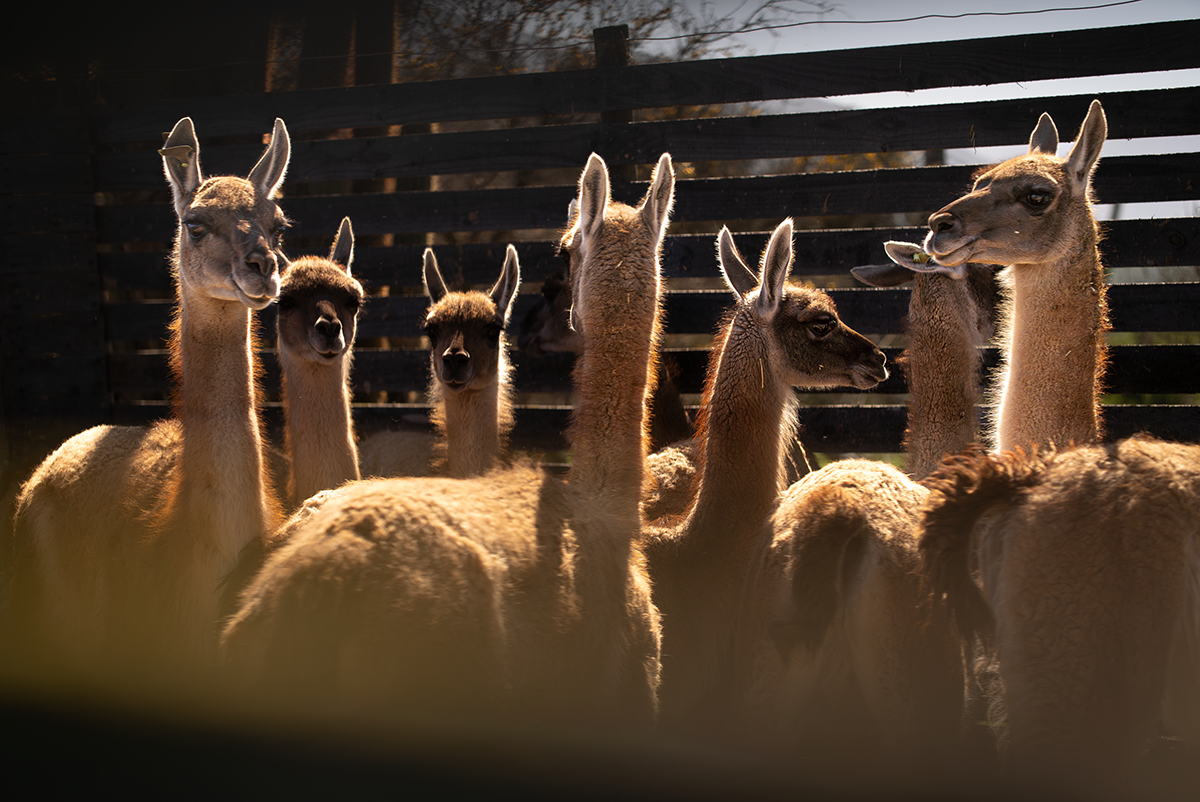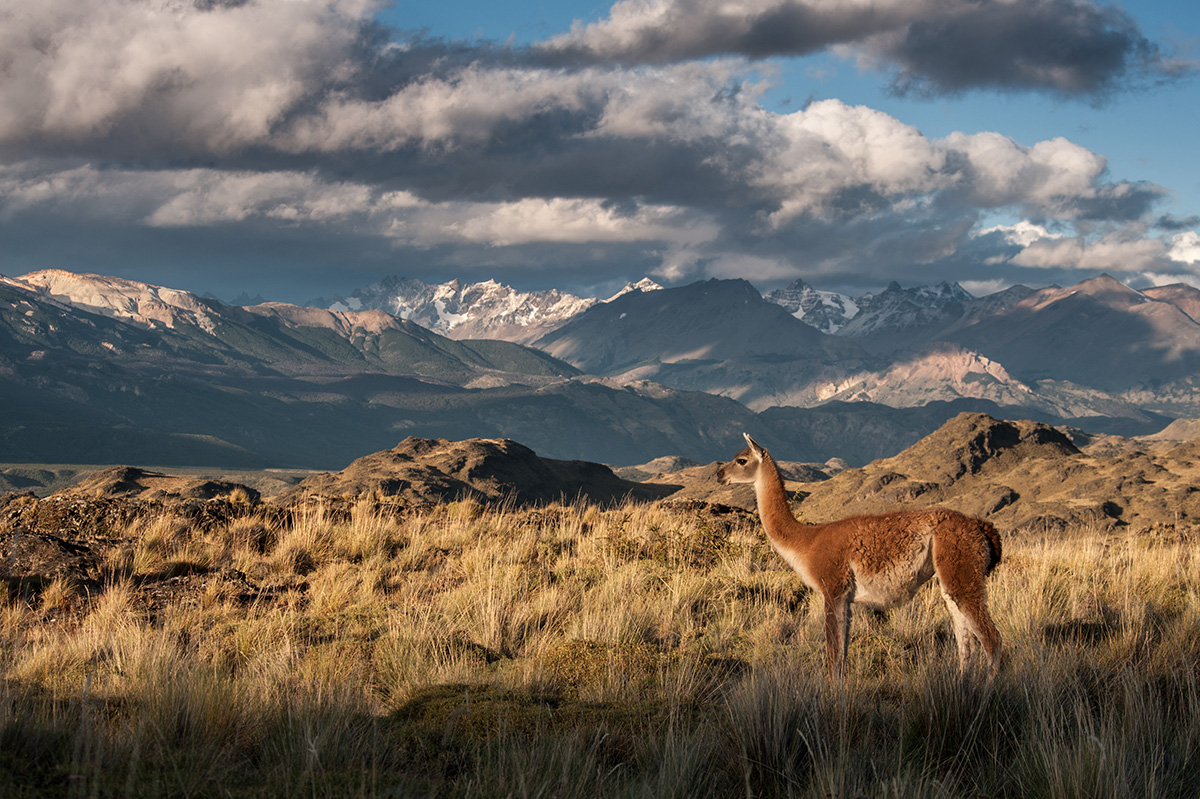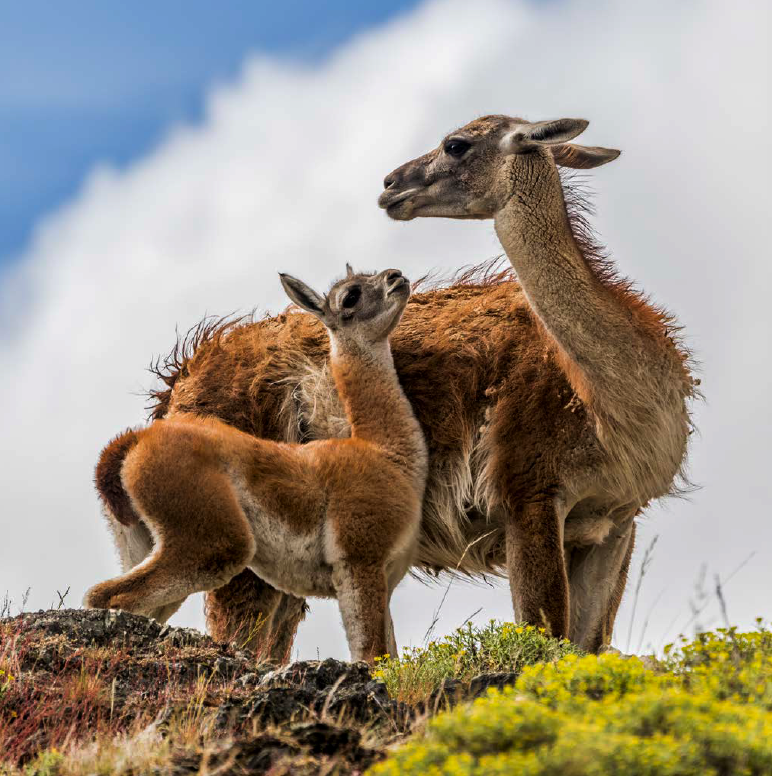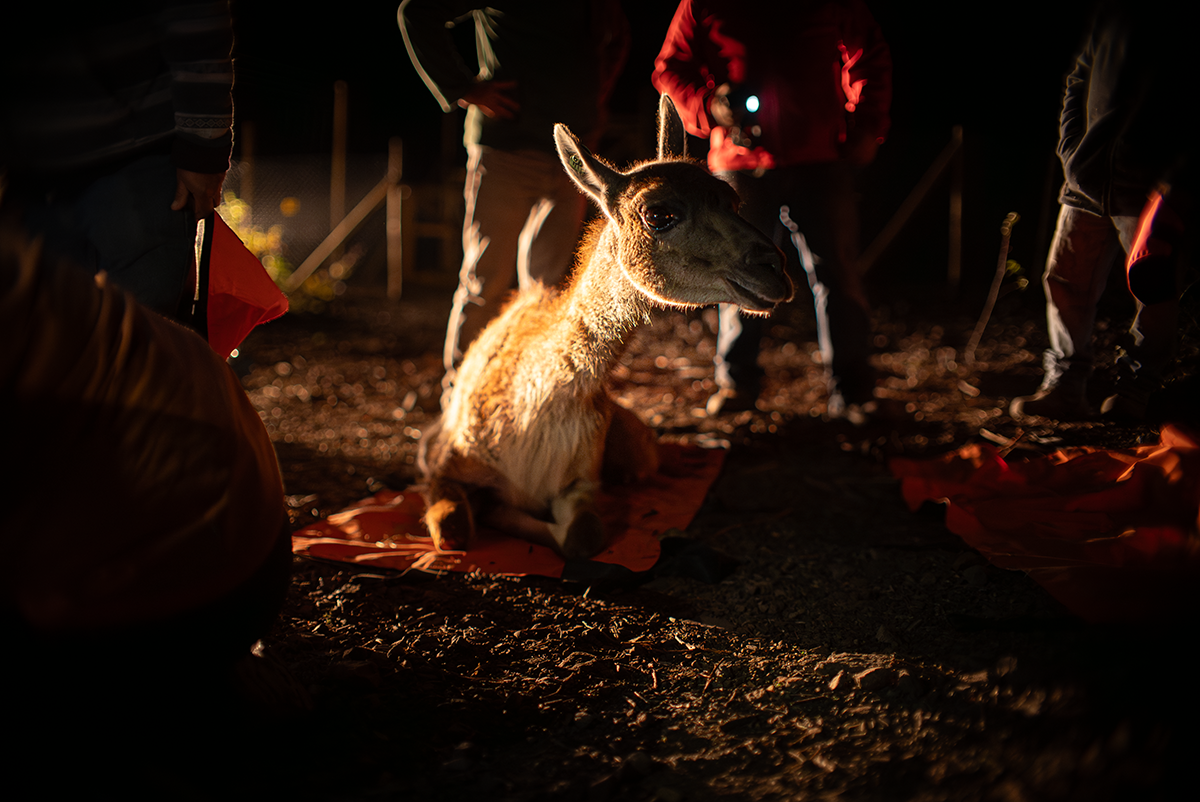Helping the Guanaco Roam Again in Chile’s Central Andes
October 2, 2025
The guanaco, the largest terrestrial mammal in Chile, once numbered in the tens of millions in South America. Today, only 300 of these iconic camelids remain in the wild in Chile’s Central Andes. In late September, a diverse coalition took a step toward recovering this herbivore and its important ecological role in maintaining the health of grasslands.
Sixteen guanacos from a private estate in the Valparaiso Region arrived at three nature sanctuaries, marking the start of a groundbreaking process in Chile: the creation of guanaco breeding centers that will lead to their future release. This initiative is part of a long-term, public-private program in the Metropolitan Region of the Andes. Planned releases in strategic areas will complement the natural expansion and growth of existing wild populations.
The goal is to repopulate guanacos in this region, restore mountain ecosystems, strengthen nature-based tourism, and improve scientific data through monitoring, population censuses, and the identification and management of threats.
According to Cristián Saucedo, director of wildlife at Rewilding Chile, “Our goal is to bring guanacos back to areas where they disappeared, including the natural corridors that link Chile’s central Andes with protected areas in neighboring Argentina. We are committed to working with nature sanctuaries, local communities, and authorities to ensure this recovery generates ecological, educational, and tourism benefits.”
For guanacos, access to natural sanctuaries is essential, including a continuous territory of 500,000 acres, which connects the Andean areas of San José de Maipo and Lo Barnechea with Argentina’s protected areas of Volcán Tupungato and Laguna del Diamante—an important binational biological corridor for this migratory species.
“This is a decisive step to prevent the local extinction of guanacos in central Chile. We not only aim to increase their population, but also to restore their role as a keystone species in the regeneration of wetlands, high-Andean meadows, and prairies, as well as in the conservation of emblematic species such as the puma and the condor,” said Sara Larraín, president of the Metropolitan Region Sanctuaries Network.
In pre-Columbian times, guanacos may have numbered 30 to 50 million across the species’ range from northern Peru to Tierra del Fuego. Today, fewer than 600,000 are estimated to remain in South America—nearly 90 percent in Argentina, about 66,000 in Chile (mainly in Magallanes), and very small populations in Peru, Bolivia, and Paraguay.
Collaboration Network
The project stems from an agreement between the University of Chile and the Metropolitan Region Sanctuaries Network, with full participation from Rewilding Chile. It is supported by the Santiago Regional Government and developed in the Natural Sanctuaries of San Francisco de Lagunillas and Quillayal, Cascada de las Ánimas, and El Plomo Sanctuary.
The three sanctuaries establishing breeding centers are members of a network of 13 sanctuaries that protect 7 percent of the surface area of the Metropolitan Region—the most populated in Chile. Rewilding Chile contributes more than 30 years of experience in ecosystem restoration and local capacity-building in conservation and territorial development, such as in the Route of Parks of Patagonia.
The Santiago Regional Government will provide funding for the expansion of guanaco breeding centers and will support their management for two years, while also developing protocols, technical guidelines, and capacity-building in high-standard nature tourism for organizations, tourism boards, and local governments.
A driving force to curb the worldwide climate emergency and the biodiversity crisis, Tompkins Conservation protects, rewilds, and defends land and marine ecosystems in the Southern Cone through collaborating to create national parks and rewilding key species. Working with public and private partners, the organization has helped to create 13 national parks, protecting 14.5 million acres. The goal is to restore a healthy planet with big, wild, and connected landscapes where animals and plants can thrive. This also means helping to build robust communities that benefit from a healthy natural world.
Kristine McDivitt Tompkins and Douglas Tompkins (1943-2015) founded Tompkins Conservation after leading iconic American clothing brands—Kristine as longtime CEO of Patagonia Inc, and Doug as co-founder of The North Face and Esprit. Changing course in the early 1990s to focus on conservation, they became two of the most successful conservation philanthropists in history. After Doug lost his life in a tragic kayaking accident in 2015, Kristine has continued to build on their foundation. She is now the president of Tompkins Conservation and a UN Environment Patron of Protected Areas.
A 501(c)(3) public charity, Tompkins Conservation carries out conservation projects through the nonprofit network of Rewilding Chile and Rewilding Argentina.





